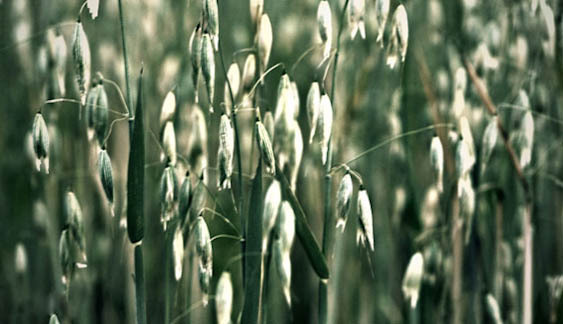Summer at Anson Mills
June 2010

We find it difficult—impossible, really—to consider a celebration of the season without first acknowledging the grave circumstances affecting the waters, wetlands, and beaches along our deep southern shoreline, and without offering an expression, however inadequate, of piercing lament for the residents of this region—people and aquatic life alike who find their livelihoods or lives in peril.
Given the wrenching images that have attended us since April, and the certainty that more will come—to rub raw our sense of what is fair and just, and stir in us fresh sadness—we hope it will come as a small comfort to our readers that what we offer for June 2010 are simple pleasures: two products, three recipes. No bones to gnaw on, nothing weighty. It feels like the right thing to do.
Kay

Classic Sandwich Bread
The French have a name for soft sandwich bread that bakes in a straight-sided pan: they call it pain de mie (pain for bread, mie for crumb). As the translation indicates, pain de mie draws definition from its fine, moist crumb rather than from the vigor of its crust, and uses milk and butter to achieve this. Americans chose mass-produced flour and boatloads of sugar for their version of pain de mie, creating the fluffy confection known as Wonder bread. It is no wonder the concept needs redressing.
Of course, we realize in this moment of artisanal loaves with burnished crusts and high-strength properties that the idea of a specialty flour for sandwich bread might sound quaintly retro. But if softer heirloom bread flours—flours intended for sandwich breads, flours that possessed their own inherent sweetness—had not been abandoned for Plan B (bad white flour and sugar), Americans, like the French, might have an honored slicing bread tradition. Instead, we have a plastic bag painted with colored balloons.
Every baker needs a great recipe for classic sandwich bread. Butter-fried croutons, a stack of French toast, a soft finger sandwich, or a grilled cheese—each of these descends directly from classic sandwich bread. But more urgently than a recipe, the baker needs proper flour from which to craft a great sandwich loaf. You guessed it: we’ve got both.
Strawberry Oat Ice Cream
The biggest jewel in summer’s crown, strawberries occupy a special place in the season: first place. When they appear, it ceases to matter what their no-good wintry avatars were up to when they dipped themselves in chocolate for New Year’s Eve, or dropped in on a champagne toast. We’re thrilled to get our hands on real berries again. It’s the size, the scent, the juice, the jelly, the sweetness of summer strawberries that separate them from those other things bearing their name—the ones which seem, by June, more tragically ersatz than ever.
Abundant and glorious as seasonal strawberries are, what gladdens us most, no kidding, are sliced strawberries and oatmeal. Sound like a waste of grace? Not. It’s the old high/low, flavor/texture set-up that delivers: soaring sweet fruit perfume and juices pushing against oatmeal’s toasty common touch. It is the chilled, satiny berry slices with their peppery seeds dropped onto hot, nubby porridge, and a righteous current of maple syrup coursing through the center.
A casual indulgence like this requires no recipe, of course. But it did get us to thinking how fantastically summer strawberries and our toasted oats might pair in an ice cream. And, boy, were we ever right! Details here.
By the way, if you’re worried that we hit strawberry season on the late side, take heart from the fact that Tri-Star strawberries, a nice new hybrid, are available through August.
Benne Butter Cookies
Sesame seeds, which are called “benne” in the South, bear the imprint of an African past, but their culinary pedigree is truly international. We know them ground into paste and powerfully seductive in the native dress of tahini, and all it informs: halvah, hummus, and baba ghanoush—to name a few. We know them toasted and untoasted, processed into light and aromatic dark oil for Asian cookery. We know them at home sprinkled on crackers and buns. Wait, did we just say “sprinkled on crackers and buns”? Seriously? Given the cultural depth and culinary generosity sesame seeds offer, have Americans not figured out anything more interesting to do with them than use them as an accessory?
The folks in Africa, the Middle East, and the Far East know sesame seeds are at their most intriguing when a bunch of them get together and create of themselves something brand new.
Well, Anson Mills has grown out some real, old-fashioned heirloom sesame, and created something brand old/new: it’s called New Crop Heirloom Bennecake Flour, and it will have exciting and potent applications in recipes ahead.
You might wonder why sesame is called “benne” in the American South and why Anson Mills is growing and hand-processing benne. In the Colonial and Antebellum Eras, benne was grown for its extraordinary oil, its vital nutrients, and its culinary versatility. Benne also provided near magical enhancements to gardens by improving soil quality while protecting nearby plants from harmful pests. Benne became sesame only when rice plantations transitioned kitchen benne to their commodity fields for commodity oil production. The seeds became tasteless commodities as well. (Read more about the history of benne seeds in the South here.)
But here’s the bottom line: bennecake flour makes cookies—fabulous cookies that draw you in by hinting they are the best and most delicately flavored peanut butter cookies you’ve ever tasted. Then, like magic, the aromatics and flavors execute a beautiful swan dive and roll over your palate with a wildflower tang and the fresh verdancy of a field nearly visual in its clarity. We’ve seen children pulled unaware and unquestioning into this widening gyre of flavor. They are not interested in benne history or other explanations that distract them from consuming these cookies. They just dig in and go.
Here’s to Summer, to recovery and restitution for the Gulf, and to Good Food!